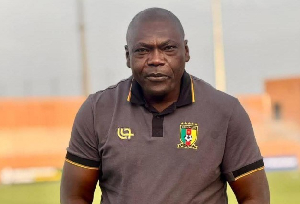A five-day EU-funded workshop on best practices in the sector is underway in Yaounde.
Aquaculture technicians in Cameroon are currently being drilled on techniques in producing quality and quantity fingerling with the view of boosting fish production and bridging the demand/supply gap in the country.
This is within the framework of a five-day workshop that went underway in Mbankolo on August 19. It is part of a European Union-funded project, "ACP Fish II Programme," which seeks to improve fishery management in ACP countries for a sustainable management of resources under their jurisdiction.
Presiding at the opening ceremony, the Director of Fisheries and Aquaculture in the Ministry of Livestock, Fisheries and Animal Industries, Dr. Belal Emma, said insufficient quality and quantity production of fingerlings, inadequate quality and quantity feed, inadequate financing and weak technical capacities of stakeholders are challenges that compromise sustainable fish production in the country. Setbacks which, he said, oblige government to import about 200,000 metric tonnes of fish annually to meet national demand estimated at over 400,000 metric tonnes. He noted that the workshop is timely as it would clear one of the constraints, improve production and help the State save some of the over FCFA 100 billion that fish importation drains in the country. He said aquaculture can reverse the current trend.
According to Dr. Nguenga David, national expert in the project, Clarias (the scientific name of the fingerlings) does not reproduce naturally in captivity. "We have to induce reproduction by injecting hormonal products in order to obtain seed contrary to tilapia which reproduces in captivity," he said. The ongoing workshop therefore is to give aquaculture technicians the know-how to better produce capture fish which is more adapted to the central African sub-region. "We are drilling them on how to produce the fingerlings, the reproduction process, how to put them into the basins, how to follow the first steps and how to manage a fish farm," Alejandro Tiana, expert of the programme said.
Infos Business of Wednesday, 21 August 2013
Source: Cameroon Tribune












